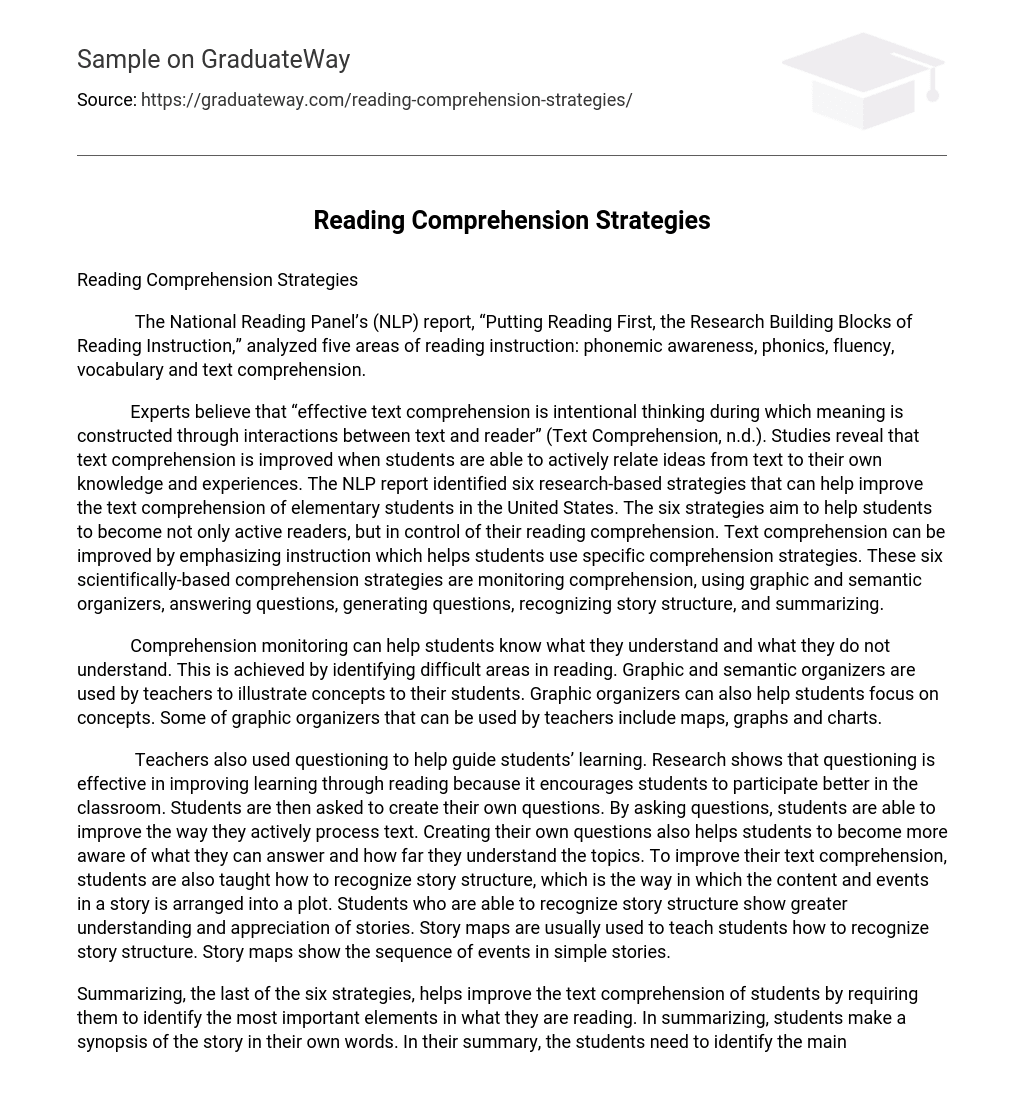The National Reading Panel’s (NLP) report, “Putting Reading First, the Research Building Blocks of Reading Instruction,” analyzed five areas of reading instruction: phonemic awareness, phonics, fluency, vocabulary and text comprehension.
Experts believe that “effective text comprehension is intentional thinking during which meaning is constructed through interactions between text and reader” (Text Comprehension, n.d.). Studies reveal that text comprehension is improved when students are able to actively relate ideas from text to their own knowledge and experiences. The NLP report identified six research-based strategies that can help improve the text comprehension of elementary students in the United States. The six strategies aim to help students to become not only active readers, but in control of their reading comprehension. Text comprehension can be improved by emphasizing instruction which helps students use specific comprehension strategies. These six scientifically-based comprehension strategies are monitoring comprehension, using graphic and semantic organizers, answering questions, generating questions, recognizing story structure, and summarizing.
Comprehension monitoring can help students know what they understand and what they do not understand. This is achieved by identifying difficult areas in reading. Graphic and semantic organizers are used by teachers to illustrate concepts to their students. Graphic organizers can also help students focus on concepts. Some of graphic organizers that can be used by teachers include maps, graphs and charts.
Teachers also used questioning to help guide students’ learning. Research shows that questioning is effective in improving learning through reading because it encourages students to participate better in the classroom. Students are then asked to create their own questions. By asking questions, students are able to improve the way they actively process text. Creating their own questions also helps students to become more aware of what they can answer and how far they understand the topics. To improve their text comprehension, students are also taught how to recognize story structure, which is the way in which the content and events in a story is arranged into a plot. Students who are able to recognize story structure show greater understanding and appreciation of stories. Story maps are usually used to teach students how to recognize story structure. Story maps show the sequence of events in simple stories.
Summarizing, the last of the six strategies, helps improve the text comprehension of students by requiring them to identify the most important elements in what they are reading. In summarizing, students make a synopsis of the story in their own words. In their summary, the students need to identify the main ideas of the story, connect the main ideas, remove unimportant information, and remember what they have read.
In identifying the most effective method for teaching comprehension strategies, teachers should consider several factors. First, effective teaching of comprehension strategies can be achieved through cooperative learning. An effective comprehension strategy instruction involves explicit or direct teaching as this technique helps students use comprehension strategies in a flexible way. A multiple-strategy instruction is an effective method of teaching comprehension strategies. In this method, the teacher and students collaborate so that students actively improve their text comprehension. In a multiple-strategy instruction, students learn how to ask questions on what they are reading, summarize parts of the text, clarify texts that they do not understand, and predict the next part of the text.
Reference
Text Comprehension. (n.d.). Retrieved May 4, 2009, from Http://www.dpi.state.nc.us/readingfirst/components/text/.





